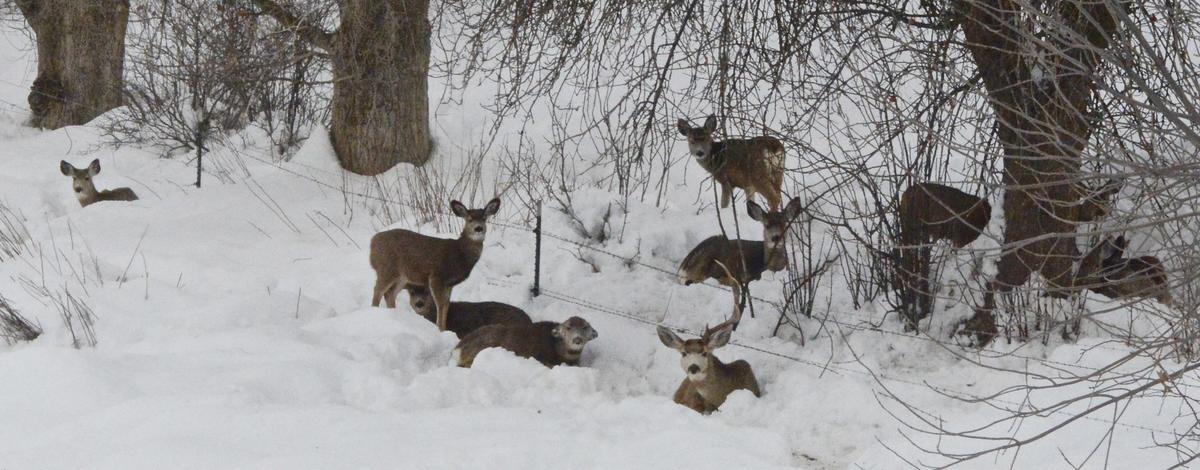Idaho Fish and Game and its winter feeding advisory committees continue to monitor conditions in light of snowstorms, and through late February there was still no need for large-scale, emergency winter feeding.
The latest batch of snowstorms to come through Idaho have pushed the snowpack for nearly all of the state’s drainages above their respective averages, according to the National Resources Conservation Service. At the end of February, snowpack ranged from 91 to 153 percent of average, with a majority of drainages running between 110 and 130 percent.
Despite above-average snowpack for this time of year, Fish and Game wildlife managers remain optimistic that they will not need to declare a winter feeding emergency in any of the state’s regions in the 2018-19 winter.
“We’re in March,” said Jon Rachael, the Fish and Game’s state wildlife manager. “People should be aware that it is pretty late in the winter right now, and it’s not the same as it would’ve been if we had this snow in December and throughout the winter – like we did in 2016-17.”
Despite the optimism, Rachael said that Fish and Game regional staff and regional winter feeding advisory committees would remain vigilant.
“We will continue monitoring this closely because things can change rather quickly,” Rachael said. “But none of the regional advisory committees or department officials are talking about winter feeding for the purpose of nutrition at this time.”
Winter feeding is typically done under emergency conditions only. In most years, snow depths and temperatures do not create adverse conditions for wintering animals. Deer, elk, pronghorn and other wildlife are adapted to Idaho’s climate and can withstand most winter weather conditions.
However, there are times when unusual weather patterns create critical periods when winter forage becomes limited or unavailable. In some instances, animals are healthy and able to withstand winter weather, but they move into areas that create public safety hazards. Those types of situations prompt Fish and Game officials to start temporary emergency feeding, as has been the case in a few locations so far this year:
- Upper Snake Region – Fish and Game is feeding a herd of about 50 elk east of Highway 20 near Sugar City, primarily over concerns for public safety and the herd’s proximity to cattle operations in the area.
- Southeast Region – Fish and Game is using bait to lure a herd of about 120 elk near Bancroft away from a landowners’ property to help alleviate interaction between a herd of elk and the landowner’s livestock.
- Magic Valley Region – The Bullwhacker feeding site is a regular feeding operation Fish and Game does every year with public safety in mind, designed to reduce elk conflict with the cities of Sun Valley and Ketchum. The Magic Valley Region is planning on opening up a couple additional feeding sites on the southern end of Blaine County to reduce conflict with agriculture and homes.
“It is important for people to know that these feeding operations have nothing to do with nutrition,” Rachael said. “These are entirely to do with keeping elk out of spots that will get them into trouble.”
Fish and Game has winter feeding advisory committees in each region of the state except the Panhandle, which has never had a winter feeding program. The regional advisory committees monitor weather conditions and keep a watchful eye on things such as snow depth, whether there is crust on snow that hinders an animal’s ability to forage for food, extended periods of sub-zero temperatures, whether animals are congregating on private agriculture lands and causing problems, and other factors.
If these conditions start to occur due to winter weather, the committees convene and make recommendations to Fish and Game based on specific criteria whether to begin emergency feeding. Here's more information about Fish and Game's emergency winter feeding program.

